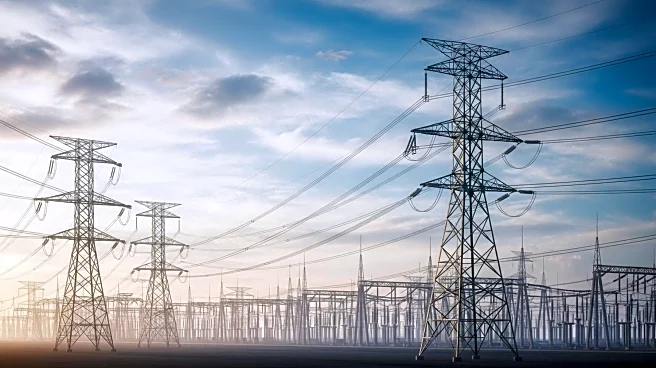What's Happening?
The Department of Energy (DOE) has announced the termination of 321 awards across 223 clean-energy and infrastructure projects, totaling approximately $7.56 billion. This decision comes amid a federal government shutdown due to a lapse in appropriations, which began on October 1, 2025. The shutdown has forced many federal agencies to suspend or sharply curtail nonessential work, affecting routine administrative, regulatory, and grant-management functions. Essential activities tied to safety, national security, and the protection of life or property continue, but overall agency capacity is reduced. The DOE's terminated projects span various program offices, including Clean Energy Demonstrations, Energy Efficiency & Renewable Energy, Grid Deployment, Manufacturing & Energy Supply Chains, ARPA-E, and Fossil Energy. Recipients impacted by these terminations have been instructed to immediately suspend project activity, cancel outstanding obligations where feasible, and refrain from incurring new costs. The DOE has given affected parties 30 days to appeal the decisions.
Why It's Important?
The termination of these clean-energy projects has significant implications for the U.S. energy sector and broader economic landscape. The affected initiatives, including hydrogen hub programs and grid modernization efforts, were crucial for advancing clean technology and infrastructure development. The uncertainty generated by these actions places states, localities, utilities, and private-sector stakeholders in a difficult position, as many had already begun project implementation and secured cost sharing. This disconnect between announced federal support and on-the-ground execution complicates investment decisions and increases contractual and financial risk for affected parties. The broader impact of the federal shutdown could slow or halt procurement, grant disbursements, and regulatory reviews, creating downstream uncertainty for businesses, research institutions, and state and local governments that rely on federal engagement.
What's Next?
The full scope of the shutdown's impact will depend largely on its duration. A short disruption would likely cause only temporary administrative delays and challenges, while a prolonged shutdown could have more lasting operational and economic effects. Extended funding lapses can slow or halt procurement, grant disbursements, and regulatory reviews, creating downstream uncertainty for businesses, research institutions, and state and local governments that rely on federal engagement. The Congressional Budget Office has previously estimated that each week of a shutdown can shave measurable points off quarterly GDP growth, with the private sector absorbing many of the indirect costs through deferred payments, paused projects, and delayed regulatory actions. For now, most observers agree that the longer the shutdown continues, the more difficult and uneven the restart of normal federal operations will be.
Beyond the Headlines
The shutdown and subsequent project terminations raise concerns about the federal government's ability to maintain its commitments to clean energy and infrastructure development. The Administration's reported willingness to make unilateral funding decisions through so-called 'pocket rescissions' or other forms of impoundment of congressionally approved funds has further complicated negotiations, raising separation-of-powers and oversight concerns among some lawmakers. This situation highlights the challenges of balancing fiscal responsibility with the need to support critical infrastructure and energy initiatives, which are essential for long-term economic growth and environmental sustainability.











